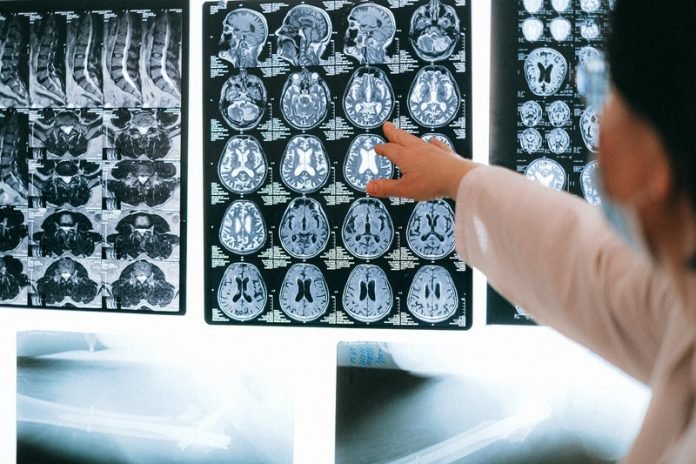
In a new study, researchers used post-mortem tissue samples to examine how novel coronavirus can reach the brains of patients with COVID-19, and how the immune system responds to the virus once it does.
They found that that SARS-CoV-2 enters the brain via nerve cells in the olfactory mucosa located in the upper region of the nasal cavity.
For the first time, the researchers have been able to produce electron microscope images of intact coronavirus particles inside the olfactory mucosa.
The research was conducted by a team from Charité – Universitätsmedizin Berlin.
It is now recognized that COVID-19 is not a purely respiratory disease. In addition to affecting the lungs, SARS-CoV-2 can impact the heart, the gut, and the brain.
More than one in three people with COVID-19 report brain symptoms such as loss of, or change in, their sense of smell or taste, headaches, fatigue, dizziness, and nausea.
In some patients, the disease can even result in stroke or other serious conditions.
Until now, researchers had suspected that these symptoms must be caused by the virus entering and infecting specific cells in the brain.
But how does SARS-CoV-2 get there?
In the study, the team tracked how the virus enters the central nervous system and then invades the brain.
They examined tissue samples from 33 patients (average age 72) who had died after contracting COVID-19.
Using the latest technology, the researchers analyzed samples taken from the deceased patients’ olfactory mucosa and from four different brain regions.
They provided evidence of the virus in different structures that connect the eyes, mouth, and nose with the brain stem. The olfactory mucosa revealed the highest viral load.
The researchers then were able to produce the first-ever electron microscopy images of intact coronavirus within the olfactory mucosa.
These findings support the notion that SARS-CoV-2 is able to use the olfactory mucosa as a port of entry into the brain.
Once inside the olfactory mucosa, the virus appears to use neuroanatomical connections, such as the olfactory nerve, in order to reach the brain.
The team also found SARS-CoV-2 in areas of the brain which control vital functions, such as breathing.
It cannot be ruled out that, in patients with severe COVID-19, the presence of the virus in these areas of the brain will have an exacerbating impact on respiratory function, adding to breathing problems due to SARS-CoV-2 infection of the lungs.
Similar problems might arise in relation to heart function.
One author of the study is Dr. Helena Radbruch.
The study is published in Nature Neuroscience.
Copyright © 2020 Knowridge Science Report. All rights reserved.



